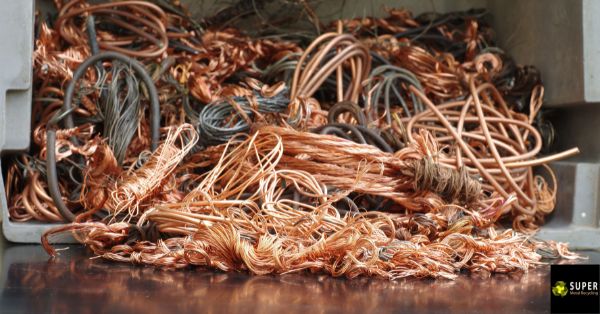How To Determine The Price For Melbourne Copper Recycling?
When it comes to metals, copper is among the most sought after. Its primary application is in electrical wiring and related tasks. Copper’s ability to be reused and recycled is one of its most notable qualities. Copper recycling in Melbourne has many uses. Aside from the obvious benefits to the users, it also helps conserve a significant amount of natural resources. In addition, everyone is trying to figure out what the best method is for establishing the value of copper scrap.
Putting your unused or unwanted copper to good use, you can turn a profit by selling it as scrap. Scrap copper dealers will put the metal through recycling processes. In this article, you’ll learn a tonne about the factors that go into establishing the price of copper scrap.
There are a few things you should take into account when you want to recycle your copper. The first is the amount of impurities in the metal. Pure copper is called “electrolytic tough pitch” (ETP) and is traded on the London Metal Exchange (LME). It contains 99.9% copper and is used in electrical applications. The second type is “copper cathode” which has a purity of 99.99%. Its main use is in the production of copper alloy products. Lastly, there’s “copper wire bar” which contains between 97-99% copper.
The amount of impurities will affect the value of your scrap metal. The next thing you need to think about is the form of the metal. Is it in a solid, liquid, or powdered state? The most common form of scrap copper is “copper wire”. This type is generated from electrical applications like cable harnesses and electrical motors. It’s easy to process and has a high recovery rate.
The last factor is the quantity of copper you have. The price per kilogram or pound of scrap copper will vary depending on how much you have.
Keep these things in mind when you want to get the best price for your copper recycling in Melbourne.
Did You Know?
Copper is a ductile metal with very high thermal and electrical conductivity. Pure copper is rather soft and malleable. A freshly exposed surface of pure copper has a pinkish-orange color.
Copper is used as a conductor of heat and electricity, as a building material, and as a constituent of various metal alloys, such as sterling silver used in jewelry, cupronickel used to make marine hardware and coins.
Copper is one of the few metals that can occur in nature in a directly usable metallic form (native metals). This led to very early human use in several regions around the world. Copper used in buildings, usually for roofing, oxidizes to form a green verdigris (or patina).
Copper is sometimes used in decorative art, both in its elemental metal form and in compounds as pigments. Copper compounds are used as bacteriostatic agents, fungicides, and wood preservatives.
Copper is essential to all living organisms as a trace dietary mineral because it is a key constituent of the respiratory enzyme complex cytochrome c oxidase. In molluscs and crustaceans, copper is a constituent of the blood pigment hemocyanin, replaced by the iron-complexed hemoglobin in fish and other vertebrates.
In humans, copper is found mainly in the liver, muscle, and bone. The adult body contains between 1.4 and 2.1 mg of copper per kilogram of body weight (1.9 to 2.7 µg/lb).
The reference intake of copper for adults 19 years and older is set at 900 µg/day. Children 1–3 years old have the highest daily dietary intake, followed by infants 4–6 months old.
If you are at Pakenham, Victoria 3810, below is the best way to visit us.
Super Metal Recycling
345 Frankston – Dandenong Road, Dandenong South VIC 3175
(03) 9706 4909
* Find us on Google Map

source https://supermetal.com.au/how-to-determine-the-price-for-melbourne-copper-recycling/
Comments
Post a Comment